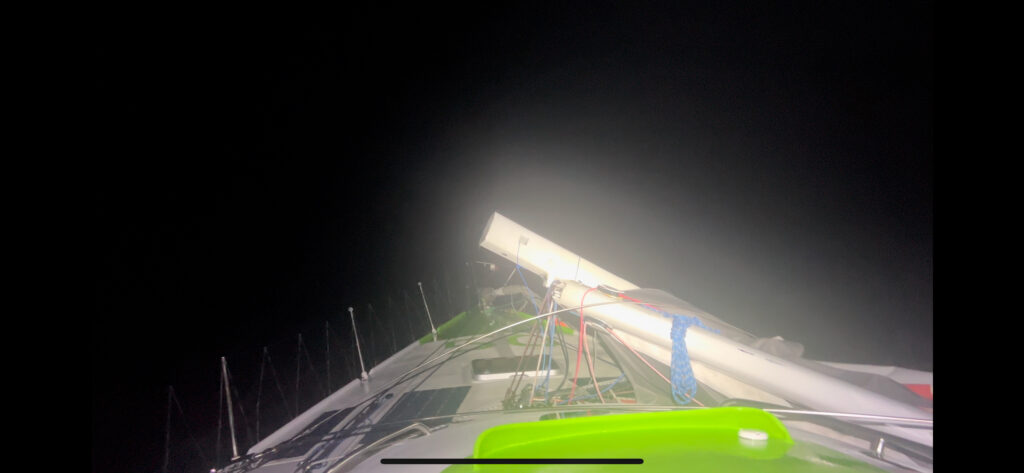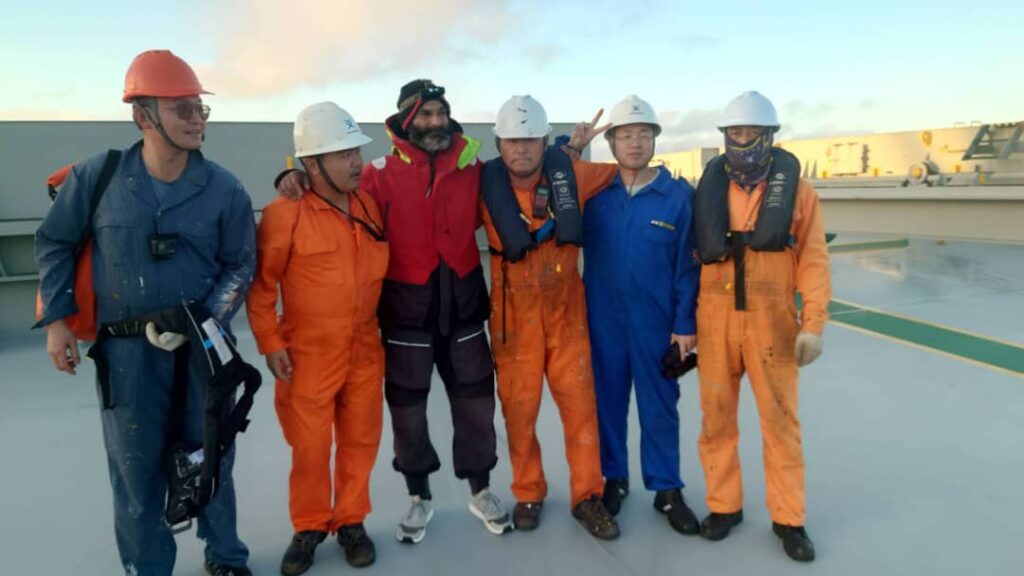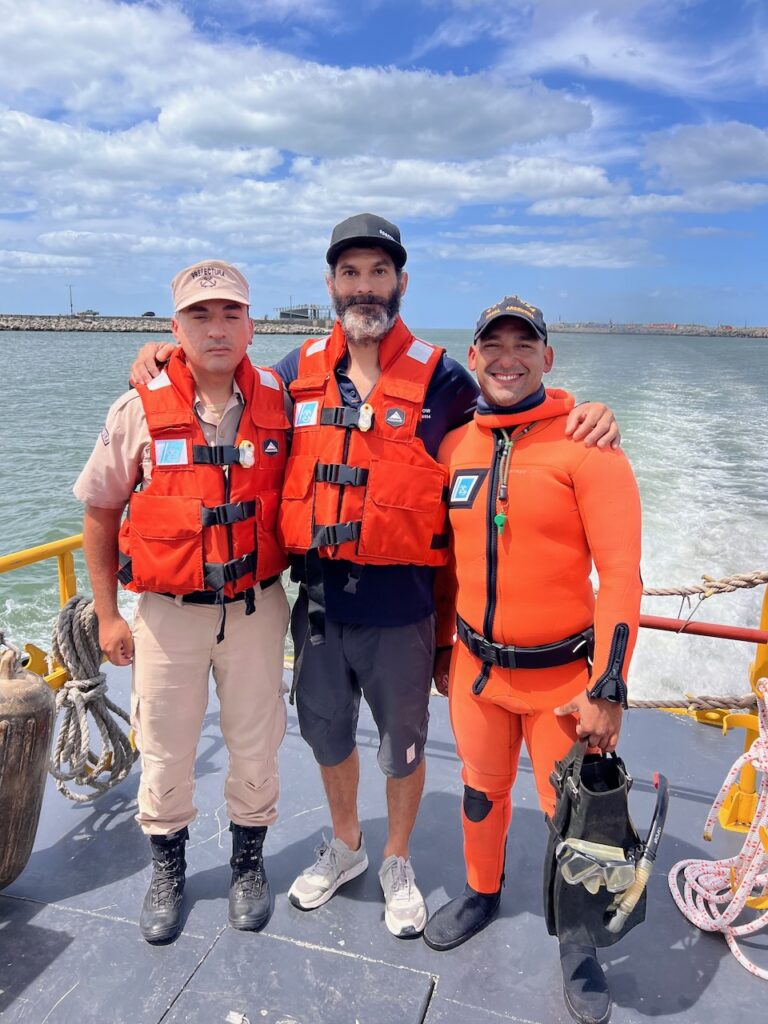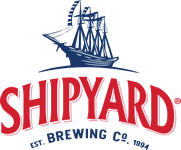A bit over 10 days ago, my participation in the Global Solo Challenge came to an abrupt and unfortunate end when I dismasted in the South Atlantic Ocean. I had just written a downtrodden and somber blog entry a day or two before where I expressed how challenging and inhospitable the South Atlantic Ocean had been to me. Sure enough, she finished me off shortly after that entry. While navigating northward some 700 miles off the coast of Argentina, I encountered a depression that was forming and then spinning off of the South American continent. As the land mass heated up under the intense summer sun, it would eventually spin off a low-pressure system. You can see these patterns around the world and have to deal with similar systems coming off of continental land masses and New Zealand.
Being that lows spin clockwise down south and the system was moving southeast, I was on my way North and was first met by northerlies on the leading edge of this weather system. Port tack was much preferred for two reasons; it was the preferred tack to get back to Europe, and if I had tacked to starboard, I would have sailed right into the system and also been encountered with more rain and potentially lightning. So while sailing mostly upwind (cracked off a bit for comfort and boat preservation), I was making a pretty lousy heading but still pointed north of east. However, a lot better than if I had tacked. Gradually, I began to get more and more lifted as the low moved southeast. First I saw more northwesterly breeze and then more westerly breeze. As the breeze was now 30 or more knots in strength, I was sailing as conservatively as I could with three reefs and a storm jib, always just trying not to break my 30 year old Open 50.
By the time the breeze had begun to go more westerly, in the night of February 11 and right during the NFL’s Super Bowl, I was now cracked off to a close reach and was being lifted up to a proper course where I was more or less pointing right at the finish line in Europe. The breeze was maxing out at 40 in the puffs and the sea had grown to 3.5 meters with several cross-swell components due to the constantly shifting wind direction in this tightly-formed low-pressure system. Shipyard Brewing began jumping off of some waves and coming down with a bang. Cracked off to a close reach, even under storm sails, we were flying along and I was gradually trying to slow the boat down and always avoid launching off waves. Such is the nature of sailing a 30 year old boat, I was always trying to baby her and could not sail her nearly as hard as was ideal, which was always a frustration. And in the end, she still broke.

I was trying to slow the boat down, but given our reachy angle she wanted to go hull speed (9 knots) even under storm sails. Down below on my bunk, I anxiously stared at an instrument display and watched our numbers and navigation – popping up frequently to make trim and course adjustments – when we launched off of a wave. Sailing over a crossed-up triangular launch ramp in 30 gusting 40 knot winds, Shipyard Brewing launched hard off a wave. I felt it down below and grabbed the sides of my bunk to brace for the upcoming impact. Bang. Shipyard Brewing slammed down and a split-second later I heard some bad noises on deck and the boat began to flatten out. Something had clearly let go.
I quickly popped up to see what was wrong.The mast was laying down over the starboard side of the boat, broken in two pieces and with the boom and mainsail still attached. The forestay, inner forestay, shrouds and runners all still seemed to be attached. The toe rails were rubbed off in seemingly an instant and the mast was both banging and grinding against the hull. In 30 knots of wind and well-formed, confused seas, recovering the rig at that time seemed difficult if not impossible. Also, the boat was extremely unstable and rolling horribly in the swells, making any work on deck extremely dangerous at night. With the way the mast was impacting the hull in the rough seas, I became fearful that the hull would become damaged and could potentially begin taking on water and sinking. Fully knowing that I was cutting away all of the materials I would need to recover to build a jury rig, I cut away the mast, boom, sails and rigging. This was the most difficult decision of my life to make. I cut everything away with a battery-powered grinder in an effort to not sink the boat.

Once I had stabilized the immediate situation, I relatively quickly made the decision to attempt to receive a rescue. Once losing the mast and parts needed for a jury rig, I knew I was in a bad situation, especially in terms of preserving the boat. With a very deep depression – perhaps the scariest storm of the whole race – headed to my position just 30 hours later, I knew that I needed to get off. A dismasted Shipyard Brewing in a 70 knot storm with 25 foot breaking waves sounded very dangerous, and definitely threatened my life, in my assessment. I wanted off. I am not ashamed to admit it. I felt my life was in danger and I wanted to live to fight another day. There’s a lot of times when you dismast and you set a jury rig and sail back to port. It’s a hero move and really cool when you pull it off. It’s unfortunate that this situation happened at such a poor time and place. But it’s the situation I was in and I made the decision to pull the rip cord. I called the US Coast Guard on a satellite phone and informed them of the situation, and then I activated an EPIRB.
For 10 stressful hours, the American and Argentinian authorities tried to contact a ship. A ship called Sakizaya Youth had been quite close to me when I dismasted, but was now motoring away from me. They may have possibly been within VHF range at the time of dismasting, though probably not as I would now be on a shorter, back up VHF antenna since dismasting. At any rate, it would be vital to reach them. I was now definitely out of VHF range. I had not been immediately calling a ‘mayday’ or requesting assistance and so did not immediately go to the VHF in this remote zone. I instead immediately went into stabilizing the situation. With full internet connectivity due to Starlink, I worked with friends and authorities in the US. My weather router Jason Christensen and US Patriot Sailing director Peter Quinn also helped a lot, and I think may have helped us gain first contact. The shore-based parties had to go to the shipping agent to figure out how to successfully get in touch with Sakizaya Youth, but they eventually got in touch. With a 2330 (local) dismasting and then a 0130 first call for help, it was now about 1130 when Sakizaya Youth turned around. Going down wind and down current at 14 knots and with Shipyard Brewing and her tiny 20 horse motoring upwind and up current at 2 knots SOG, we had a combined closing speed of about 16 knots. With something over a hundred miles divided by 16, we were in a race against the clock to rendezvous at roughly sunset.

This also worked very well with the weather as the seas and wind were, relatively speaking, glassing off throughout the day before turning nuclear the following day with up to 9 meter (30 foot) waves predicted at my position and winds approaching up to 70 knot gusts. I think it was about 1830, or about 45 minutes before sunset when Shipyard Brewing and Sakizaya Youth were alongside. As I pulled alongside, the crew dropped a vertical rope ladder down the side of the ship which led to a diagonal metal ladder. As I made my approach, I jumped down below. I had three thru-hull fittings ready to flip open and flood the boat, as I was ordered to do by the Argentinian authorities. Once taking care of that, I went back on deck and made my final course correction and then hit neutral on the engine. The beam of Shipyard Brewing went softly alongside the ship. I calmly stepped on the ladder and slowly, and very deliberately, climbed the rope ladder. Same thing on the metal ladder. Very slow, deliberate movements.
I was now on deck and safe, and the Chinese crew hugged me and took my life jacket and small dry bag of personal items. They directed me to the bridge to meet the Captain, and then showed me to a room to shower and then have some dinner. After this brief process of boarding the ship, I had showered and gone to the mess room and it was already dark. Had Sakizaya Youth waited any longer, it would have been dark as the rescue was attempted, potentially rendering it impossible. And the following morning had horrendous conditions, that would be constantly deteriorating. I thanked the Captain and crew immensely for saving my life, acutely aware of how shitty, and fortunate, my current situation was. February 12, 2024 was both one of the best and worst days of my life. All in less than 24 hours, I had gone from holding down 3rd place in the Global Solo Challenge to being dismasted, then working towards a rescue at sea and actually fearing for my life, to then losing the boat at sea and having my life saved at sea. But I was also then headed to Argentina and just two days away from seeing my girlfriend. It was a lot to process.
The following morning, I went to the bridge to have coffee and talk to the Captain. The Captain was a kind gentleman named Cui Gaohua. We were about the same age and had nice conversations. After exchanging formalities and brief discussion about the status of the weather and the ship, I poured myself a cup of water and instant coffee. I stirred my instant coffee and then peered out over the horizon for the first time. Max wind speed registered on the ship’s anemometer was 69.3 knots and it was blowing 57 the first time I looked. Right then, an 8-meter (25 foot) breaking wave detonated against the bow of the ship. In the distance, there were massive breaking waves and long, glorious white streaks on the water. It was beautiful in the way that the chaos of a south seas gale can be. In that moment however, I was immensely glad to be off of Shipyard Brewing, and I guess I haven’t looked back. This is an extremely difficult and painful situation, but I am confident that I sailed well and exhibited good seamanship before, during and after my dismasting, and that the rig coming down is not my fault. For me, I need to move on. This is a bad and challenging experience but I can not let it define me.
Two days later, we reached port in Argentina and i was disembarked a couple miles offshore by the Argentinian local Navy. After clearing formalities ashore and being greeted by my partner Marisa and a filmmaker named Aidan, we drove to a larger city, Mar del Plata, for two days before flying back to the United States. Back to Portland, Maine where my Global Solo Challenge campaign with Shipyard Brewing, aka Sparrow, all began. And also where my title sponsor Shipyard Brewing is based. Despite, or even perhaps because of, my desire to continue this journey to race around the world is now stronger than ever. There is more heart break and more motivation to right this wrong and finish the unfinished. I entered the Global Solo Challenge with a goal to simply sail a good race and prove that I was a viable candidate for the Vendée Globe. I think I did that, and so even though this race ended in heart ache and disappointment, I don’t think my stock has gone down. Starting with an old, funky boat and no money, I managed to get to the starting line and become a viable American contender in a solo around the world race. I fought for the win for the first half and fought for a podium the second half, before dismasting more than 3/4 of the way around the world and after the three Capes. I had a road map back to Europe and was looking at 3rd, or at worst, 4th place out of 16 starters and some 60 original entries. From the outside looking in, I think it’s clear that I am a good sailor and capable of getting a solid boat and good partners and mounting a viable campaign for the Vendée Globe. At least a budget campaign with a classic boat to start, and hopefully a more well-resourced campaign with more experience four years later.
So I am still aiming for the 2028 Vendée Globe. That is my goal and I am putting it out there to the universe. To that effect, I have already begun to solidify and re-affirm existing relationships and will begin laying the ground work to find new partners to write the next chapter in what can continue to be a beautiful story. I am hoping to have an IMOCA to begin training by early next year, if not this year. And in the meantime, I have what looks like a good opportunity to do some solo and doublehanded Class 40 sailing and racing on the west coast beginning very soon. As for me, it’s important for me to get back on the horse immediately. Less than a week after arriving back to Maine, i’m about to fly to Mexico to deliver a 100-foot supermaxi racing yacht from Mexico to California. And hopefully soon i’ll be working on a west coast Class 40 campaign while looking for partners for the Vendée Globe.
Global Solo Challenge ended poorly for Shipyard Brewing, but I am immensely grateful to Shipyard Brewing, all of my sponsors, supporters and followers. Your love and support has inspired me daily. But the story’s not done yet, LFG.
Aloha,
Ronnie
